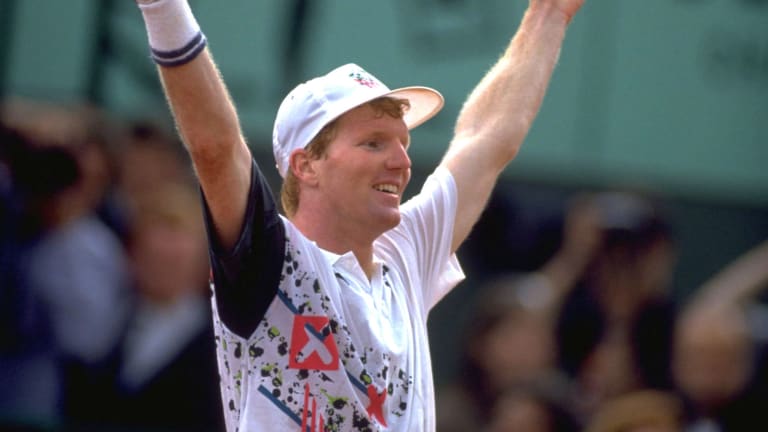Having grown up as a fan of all sports, Jim Courier was surely familiar with the concept of the “sophomore slump”—a drop in performance that often affects athletes in their second year of high-level competition.
But as Courier had learned throughout his 1989 tennis campaign, knowledge is one thing, experience is another.
Courier’s rookie year as a pro, 1988, had been tremendous. Ranked No. 348 in January, Courier by late December was ranked No. 43 in the world. His decision to turn pro instead of play college tennis had been more than justified by a series of fine results.
But by the end of July ‘89, Courier still had yet to crack the Top 40. Meanwhile, two of his peers, Andre Agassi and Michael Chang, had vaulted into the Top 10, Agassi earning many titles, the 17-year-old Chang amazingly winning the singles championship at Roland Garros. Another Courier rival, Pete Sampras, had made a major statement at the ’89 US Open when he’d upset defending champion Mats Wilander. Meanwhile, Courier during that same US Open had lost to Ivan Lendl, 6-1, 6-2, 6-3.
One week after being beaten in the first round of Los Angeles by No. 69-ranked Pieter Aldrich, Courier made his debut at the Ebel Swiss Indoors, an event played in Basel, Switzerland at the Halle Saint-Jacques.
By then ranked No. 35 in the world, Courier was unseeded. Four match wins took him to the finals of an ATP event for the first time. Most notable were a second round victory over No. 11-ranked Aaron Krickstein and a semifinal win versus veteran Andres Gomez.
But the October 8th final would take place against an even more formidable opponent. World No. 3 Stefan Edberg was riding a 19-match winning streak in Basel, having won the title the last three times he’d played it. Just prior to playing Courier, Edberg had beaten another gritty American named James, the legendary Jimmy Connors.
Up against Edberg for the first time, Courier snuck out the first set in a tiebreaker, 8-6. But when Edberg won the next two sets, 6-3, 6-2, it appeared that Courier was on the path for yet another sophomore year learning experience.
Quite surprisingly, Courier won the fourth set, 6-0. In the decider, though, Edberg led 3-1 and 4-2. Fueled by the tenacity that defined his entire career, Courier won five of the next six games. On championship point he struck a forehand lob winner to earn the upset victory, 7-6 (6), 3-6, 2-6, 6-0, 7-5.
“I am speechless,” Courier said of an effort that lasted three hours and 15 minutes. "That was the greatest victory of my career. Even going so far as the final was a breakthrough.”
This was the first of 10 matches Courier would play versus Edberg. He’d end up leading their rivalry, 6-4, including victories at the Australian Open, Roland Garros and Wimbledon.
Thanks largely to that win, by the end of 1989, Courier’s ranking would rise to No. 24—not a bad sophomore year after all.
